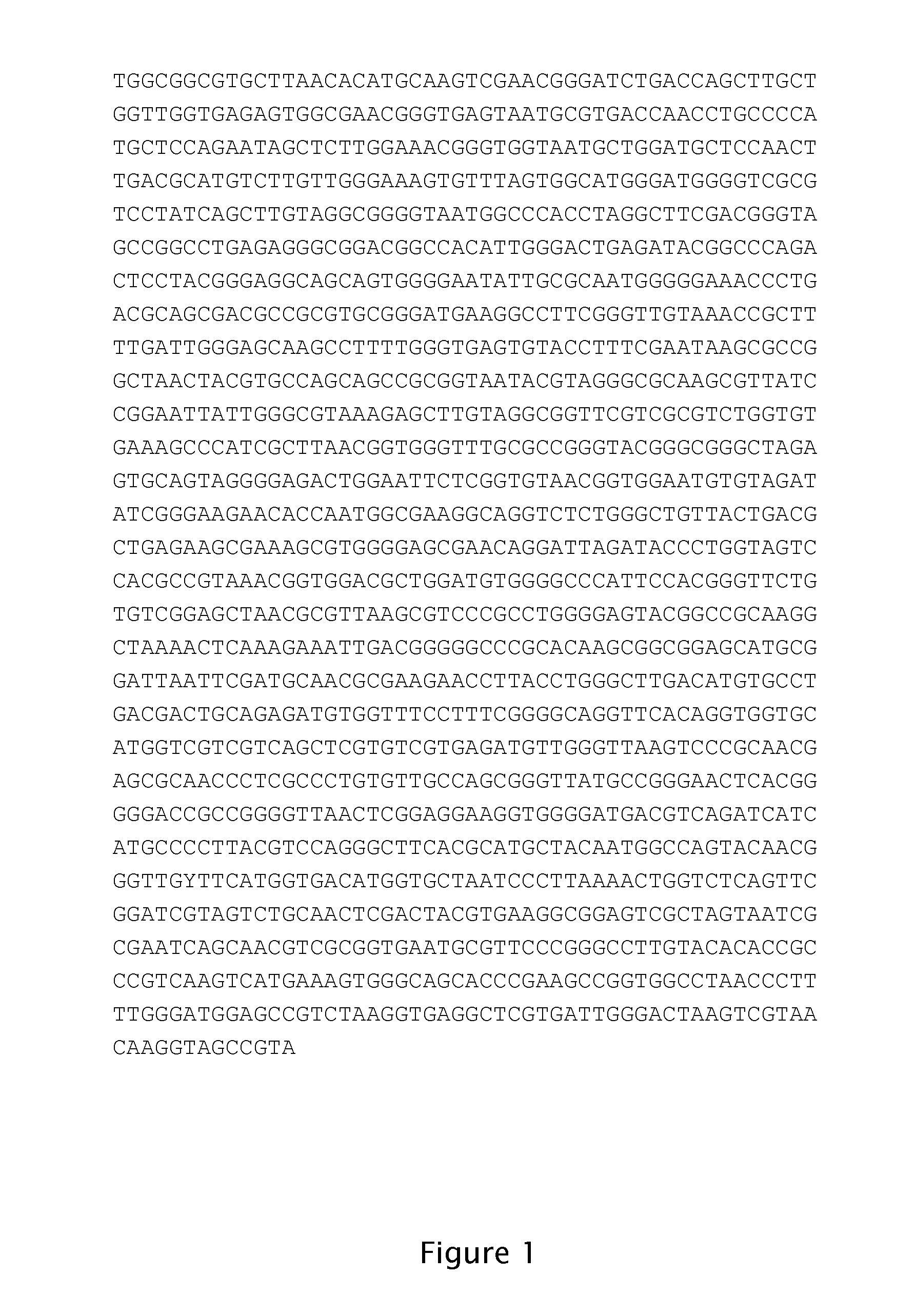Compositions and methods for detecting BV-associated bacterial nucleic acid
a nucleic acid and bacterial technology, applied in the field of compositions and methods for detecting bv-associated bacterial nucleic acid, can solve the problems of pelvic inflammatory disease, increased risk of human immunodeficiency virus infection, and low birth weigh
- Summary
- Abstract
- Description
- Claims
- Application Information
AI Technical Summary
Benefits of technology
Problems solved by technology
Method used
Image
Examples
example 1
Reverse TMA (RTMA) T7 Primer Screen for Gardnerella vaginalis
[0135]The purpose of this experiment was to screen several T7 primers in an RTMA assay with a non-T7 primer, blocker, and probe to identify a set of oligos that amplify with adequate of specificity.
Protocol
[0136]The Amplification Reagent was prepared to contain 0.05 pm / microliter of Blocker oligo SEQ ID NO:12, 0.1 pm / microliter of Non-T7 oligo SEQ ID NO:8 and 0.08 pm / microliter of one of the following T7 oligos: SEQ ID NOS:1, 2, 3, 4 or 5. The Probe Reagent was prepared to contain 5E6 RLU / 100 microliters of SEQ ID NO:20. Target capture and amplification reactions were prepared and performed as follows: Add 400 ul of 5.0E3 CFU / mL Gardnerella vaginalis lysate to each reaction tube. Add 100 ul of Target Capture Reagent (“TCR”) reagent with SEQ ID NO:26 at a concentration of 0.05 pm / ul. Incubate in a 60 degree C. Water Bath for 20 minutes. Cool to room temperature for 20 minutes. Place target capture reaction tube onto a magn...
example 2
Probe and Specificity Panel for Gardnerella vaginalis
[0143]The previous experiment identified several T7 primers that could be used for the detection of GV lysates. The purpose of this next experiment was to identify additional AE-probes, identify probes with the best signal to noise ratio, identify additional non-T7 primers, and perform a specificity screen to detect GV in the presence of Lactobacillus crispatus, Lactobacillus vaginalis, and Bifidobacterium adolescentis.
Protocol
[0144]The Amplification Reagent was prepared generally as described in Example 1, using Blocker oligo SEQ ID NO:12, Non-T7 oligo SEQ ID NO:8 and T7 oligo SEQ ID NO:5. The Probe Reagent was prepared generally as described in Example 1 using one of the following detection probes: SEQ ID NOS:20, 21, 22 or 23. The Amplification Protocol generally followed Example 1.
Results and Conclusion
[0145]
TABLE 3Probe screening GV assay negative control and 5.0E3 CFU / mL of Gardnerella vaginalisSEQ ID NO: 20SEQ ID NO: 21SEQ...
example 3
RTMA Gardnerella vaginalis Non-T7 Primer Comparison and Probe Specificity Panel
[0150]The purpose of this experiment was to better characterize the RTMA GV assay. This experiment compared the Non-T7's: SEQ ID NO:8 and SEQ ID NO:7 with T7: SEQ ID NO:5, blocker: SEQ ID NO:12 and probe: SEQ ID NO:22. This experiment also evaluated specificity with the Lactobacillus vaginalis, Lactobacillus crispatus, and Bifidobacterium panel.
[0151]The Amplification Reagent was prepared as is generally described in Example 1 and contained the above mentioned blocker, T7, probe and one of the two Non-T7 oligomers per each separate reaction condition. The Probe Reagent was prepared generally as in Example 1, and the Amplification Protocol was also generally as described in Example 1.
Results and Conclusion
[0152]
TABLE 5Comparison of SEQ ID NO: 7 vs SEQ ID NO: 8with two different concentrations of GVAmt GVSEQ ID NO: 8SEQ ID NO: 70 CFU / mLAvg3957.24477.4±SD125.4156.65e3 CFU / mLAvg9346.2537849.4±SD942.640534.60 ...
PUM
| Property | Measurement | Unit |
|---|---|---|
| melting temperature | aaaaa | aaaaa |
| pH | aaaaa | aaaaa |
| length | aaaaa | aaaaa |
Abstract
Description
Claims
Application Information
 Login to View More
Login to View More - R&D
- Intellectual Property
- Life Sciences
- Materials
- Tech Scout
- Unparalleled Data Quality
- Higher Quality Content
- 60% Fewer Hallucinations
Browse by: Latest US Patents, China's latest patents, Technical Efficacy Thesaurus, Application Domain, Technology Topic, Popular Technical Reports.
© 2025 PatSnap. All rights reserved.Legal|Privacy policy|Modern Slavery Act Transparency Statement|Sitemap|About US| Contact US: help@patsnap.com

